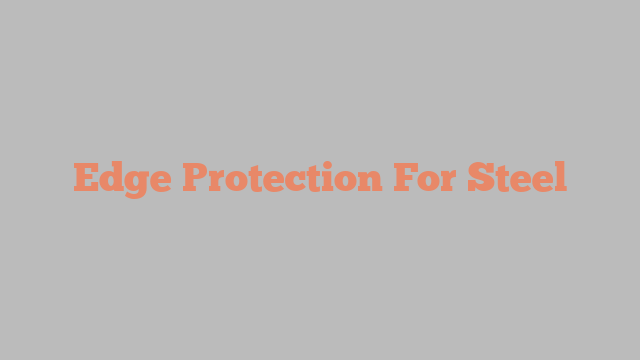Protection For Steel
Edge protection for steel is a safety solution to prevent injuries and protect property when working in areas where there is a risk of falling from height. It consists of a system of barriers held in place by posts which are fixed to the building structure or platform using brackets, clamps or bases. It is installed where there is a risk of falling from a height high enough to cause injury or death. It can also be used to protect people working in a hazardous area such as close to the leading edge of a construction site.
Stainless steel edge guards are available in various sizes and finishes, making them an ideal solution for industrial metal corner protection. These metal trims are aesthetically pleasing, durable, and offer superior impact resistance. IMS stocks a range of stainless steel and aluminum edge guards to meet the needs of any project.
Edge protection plays a crucial role in ensuring the safety and longevity of steel structures. Steel, with its remarkable strength and versatility, is widely used in construction projects ranging from high-rise buildings to bridges and industrial facilities. However, the edges of steel components are vulnerable to damage from various sources, including impact, corrosion, and wear. That’s where edge protection comes into play.
Edge protection for steel is a vital component that safeguards the edges of steel elements, such as beams, columns, and plates. It acts as a barrier, shielding the edges from potential hazards and enhancing the overall durability of the structure. Let’s explore some of the key benefits and methods of edge protection for steel.

Edge Protection For Steel
First and foremost, edge protection helps prevent damage caused by impact. Steel edges are often subjected to accidental collisions, such as from moving equipment or heavy loads. By using appropriate edge protection methods, such as edge guards, impact-resistant coatings, or rubberized profiles, the risk of dents, chips, or cracks can be significantly reduced. This ensures the structural integrity of the steel components and avoids costly repairs or replacements.
Another critical aspect of edge protection is corrosion prevention. Steel is prone to corrosion when exposed to moisture, chemicals, or harsh environments. The edges, being more vulnerable due to their exposed nature, are particularly susceptible. Implementing corrosion-resistant edge protection solutions, such as galvanization, epoxy coatings, or stainless steel edge caps, acts as a barrier against corrosive elements, prolonging the lifespan of the steel structure.
Wear and abrasion can also impact the edges of steel components over time, especially in applications where frequent movement or contact occurs. Edge protection methods such as installing wear plates, applying protective coatings, or using abrasion-resistant edge profiles can help mitigate the effects of wear, ensuring the longevity of the steel elements and reducing maintenance requirements.
Furthermore, edge protection serves an important safety function. In environments where steel structures are exposed and accessible to people, such as public areas or construction sites, sharp or rough steel edges can pose significant risks of injury. By employing edge protection measures like safety caps, rounded edge profiles, or guardrails, the potential for accidents can be minimized, creating a safer environment for workers and the general public.
